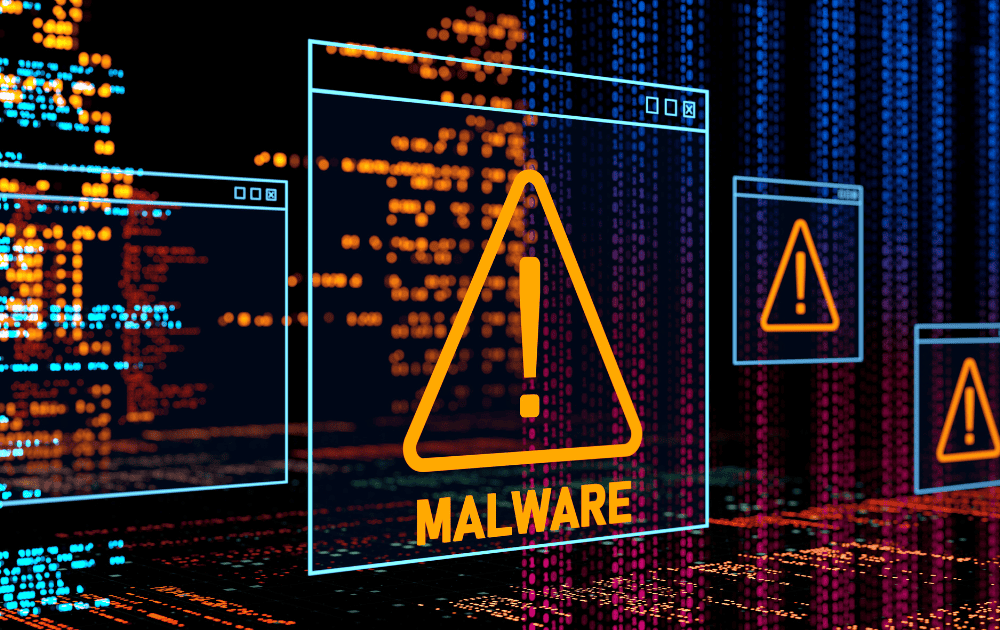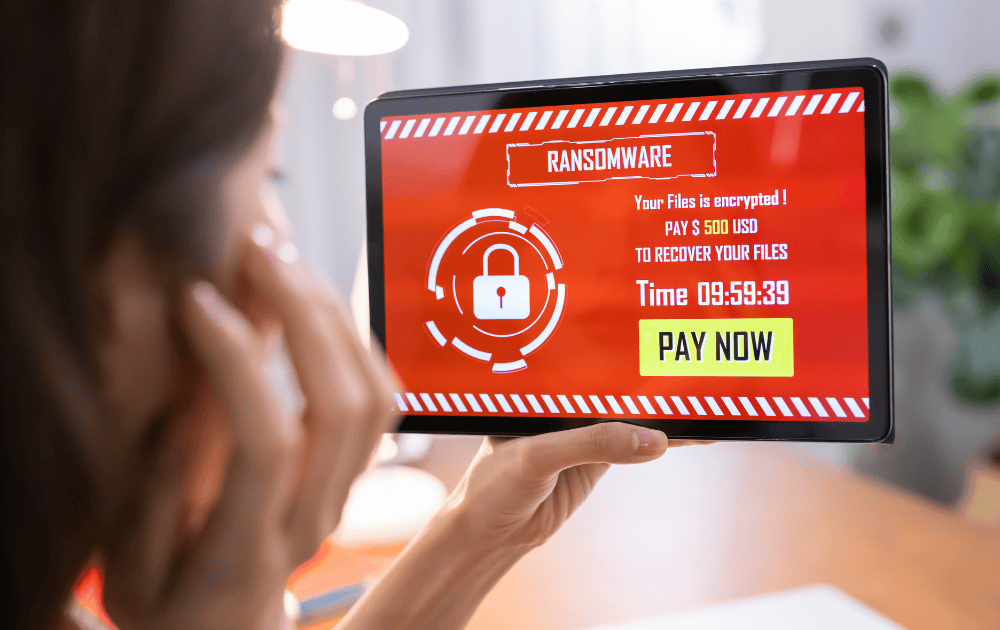In the realm of IT support, having a robust understanding of cyber security threats is imperative for the smooth functioning and protection of digital assets, particularly as organizations face increasing risks from Phishing Attacks, Malware Infections, Ransomware Incidents, Data Breaches, and Insider Threats.
Phishing Attacks
In the field of cybersecurity, phishing attacks are a common and deceptive threat that affects businesses of all sizes. For SMEs with IT infrastructure, grasping the mechanics of phishing and its potential impact is essential for protecting their sensitive information.
How Phishing Works
Phishing is a deceptive tactic employed by cybercriminals to trick individuals into divulging confidential information, such as login credentials, financial details, or personal data. These malicious actors often masquerade as trustworthy entities, such as legitimate companies or government agencies, through fraudulent emails, messages, or websites.
Phishing attacks typically involve the following steps:
- An unsuspecting individual receives a seemingly legitimate communication, often designed to create a sense of urgency or importance.
- The message contains a call to action, prompting the recipient to click on a malicious link or provide sensitive information.
- Upon interaction with the malicious content, the cybercriminal gains unauthorized access to the victim's data, which can be used for various nefarious purposes, including identity theft, financial fraud, or corporate espionage.
Impact of Phishing Attacks
The repercussions of falling victim to a phishing attack can be severe and far-reaching for SMEs. Some of the significant impacts include:
- Financial Loss: Phishing attacks can lead to direct financial losses through unauthorized transactions or payments made using stolen credentials.
- Reputational Damage: A successful phishing attack can tarnish the reputation of an organization, eroding customer trust and loyalty.
- Data Breaches: Compromised credentials obtained through phishing can result in data breaches, exposing sensitive information to unauthorized parties.
- Legal Consequences: SMEs may face legal ramifications if they fail to adequately protect sensitive customer or employee data from phishing attacks.
Understanding how phishing works and its devastating impact on businesses allows SMEs to implement robust cybersecurity measures and employee training programs to mitigate risks. Organizations must foster a security-conscious culture and remain vigilant against the evolving tactics used by cybercriminals.

Malware Infections
Cybersecurity threats, particularly malware infections, pose a significant concern for businesses of all sizes. Understanding the various types of malware and their associated risks is crucial for safeguarding sensitive data and maintaining operational continuity.
Types of Malware
Malware, short for malicious software, encompasses a wide range of malicious programs designed to infiltrate computer systems and cause harm. Here are some common types of malware that pose a serious threat to SMEs:
| Type of Malware | Description |
| Viruses | Self-replicating programs that attach themselves to clean files and spread through a network or system, causing damage as they propagate. |
| Trojans | Disguised as legitimate software, Trojans trick users into executing them, allowing attackers to gain unauthorized access to the system. |
| Worms | Standalone malware that replicates itself and spreads across networks, consuming bandwidth and degrading system performance. |
| Ransomware | Encrypts files or locks users out of their systems, demanding ransom payments for decryption keys. |
| Spyware | Secretly monitors and gathers user information without their knowledge, posing serious privacy risks. |
| Adware | Displays unwanted advertisements and may redirect users to malicious websites, affecting user experience and system performance. |
Risks Posed by Malware
Malware infections can have dire consequences for SMEs, ranging from financial losses to reputational damage. It's essential to be aware of the risks associated with malware to effectively mitigate these threats and protect your business:
| Risk of Malware | Impact |
| Data Loss | Malware can delete or encrypt critical files, leading to irrevocable data loss if proper backups are not in place. |
| Financial Loss | Ransomware attacks can result in significant financial demands, impacting the bottom line of SMEs that may not have the resources to pay the ransom. |
| Operational Disruption | Downtime caused by malware infections can disrupt business operations, leading to productivity losses and potentially affecting customer services. |
| Compliance Violations | Data breaches resulting from malware infections can lead to non-compliance with data protection regulations, resulting in legal repercussions and fines. |
| Reputational Damage | Publicized malware incidents can tarnish the reputation of SMEs, eroding trust among customers and business partners. |
Understanding the types of malware that threaten SMEs and the associated risks allows businesses to implement robust cybersecurity measures to prevent and mitigate the impact of infections. Proactive security measures, employee training, and regular system updates are essential for defending against the evolving landscape of malware threats.
Ransomware Incidents
In the realm of cybersecurity, ransomware incidents pose a significant threat to organizations of all sizes. Understanding how ransomware operates and the dire consequences it can have is crucial for SMEs seeking robust IT support.

How Ransomware Operates
Ransomware is a type of malicious software designed to infiltrate computer systems and encrypt files, rendering them inaccessible to users. Typically, ransomware gains entry into a system through phishing emails, malicious websites, or software vulnerabilities. Once inside, it encrypts essential files and demands a ransom payment in exchange for the decryption key.
Ransomware often employs strong encryption algorithms that make it nearly impossible for victims to recover their files without paying the ransom. The perpetrators behind ransomware attacks often demand payment in cryptocurrencies to maintain anonymity and evade law enforcement.
Consequences of Ransomware Attacks
The repercussions of falling victim to a ransomware attack can be severe and wide-ranging. SMEs that experience ransomware incidents may face:
| Consequences of Ransomware Attacks |
| Financial Loss: Ransom payments can be exorbitant, draining financial resources and impacting business operations. |
| Data Loss: If files are not adequately backed up, organizations risk permanent loss of critical data. |
| Reputation Damage: Public disclosure of a ransomware incident can tarnish the reputation of an SME and erode customer trust. |
| Legal Ramifications: Depending on data protection regulations, organizations may face legal penalties for data breaches resulting from ransomware attacks. |
| Operational Disruption: Ransomware attacks can disrupt day-to-day operations, leading to downtime and loss of productivity. |
It is essential for SMEs to implement robust cybersecurity measures, such as regular data backups, employee training on recognizing phishing attempts, and deploying intrusion detection systems to detect and prevent ransomware attacks. Proactive cybersecurity practices can strengthen an organization's resilience against ransomware threats and safeguard its digital assets from potentially devastating consequences.
Data Breaches
Data breaches pose a significant threat to the security of businesses, potentially exposing sensitive information to unauthorized individuals. Understanding the causes and effects of data breaches is crucial for organizations looking to bolster their cybersecurity measures.
Causes of Data Breaches
Data breaches can occur due to various factors, ranging from human error to sophisticated cyber attacks. Some common causes of data breaches include:
| Cause of Data Breach | Description |
| Phishing Attacks | Deceptive emails or messages tricking individuals into revealing confidential information. |
| Weak Passwords | Inadequately protected passwords that can be easily guessed or hacked. |
| Unpatched Systems | Failure to update software and systems, leaving vulnerabilities open to exploitation. |
| Insider Threats | Malicious or negligent actions by employees or third-party contractors. |
| Malware Infections | Viruses, ransomware, or other malware compromising systems and stealing data. |
Addressing root causes and implementing robust security protocols can significantly reduce the likelihood of data breaches.

Effects of Data Breaches
The repercussions of a data breach can be far-reaching and detrimental to business operations, financial stability, and reputation. Some of the key effects of data breaches include:
| Effects of Data Breach | Impact |
| Financial Losses | Costs associated with breach remediation, legal fees, and potential fines. |
| Damage to Reputation | Loss of customer trust and loyalty, leading to decreased business opportunities. |
| Regulatory Penalties | Non-compliance fines due to failure to protect sensitive data as mandated by data protection laws. |
| Data Exfiltration | Theft of sensitive information, including personal and financial data, jeopardizing privacy. |
| Operational Disruption | Downtime and disruption of normal business activities, impacting productivity and revenue. |
Understanding the gravity of data breaches and their implications is essential for organizations of all sizes. By being proactive in identifying vulnerabilities, implementing strong security measures, and conducting regular security assessments, businesses can defend against data breaches and safeguard their valuable information.
Insider Threats
Cybersecurity faces significant risks from insider threats. Understanding these threats and implementing effective strategies to mitigate them are crucial for safeguarding sensitive information and data.
Definition of Insider Threats
Insider threats are security risks that originate from within the organization itself. These threats can be intentional, where an employee or individual with authorized access deliberately compromises security, or unintentional, such as when an employee falls victim to social engineering tactics.
Insiders with malicious intent may seek to steal confidential data, leak sensitive information, or disrupt the organization's operations. In contrast, unintentional insider threats can result from negligence, lack of awareness, or human error, leading to inadvertent data breaches or security incidents.
Mitigating Insider Threats
Mitigating insider threats requires a proactive approach that combines technological solutions, employee training, and strict access controls. Some key strategies to address insider threats include:
- Role-Based Access Control (RBAC): Implement RBAC policies to limit employees' access to data and systems based on their job responsibilities. This ensures that individuals only have access to the information necessary to perform their tasks.
- Monitoring and Auditing: Regularly monitor and audit employee activities, especially those with privileged access to sensitive data. Suspicious behavior or unauthorized access attempts should be promptly investigated and addressed.
- Employee Training and Awareness: Provide comprehensive training programs to educate employees about cybersecurity best practices, the importance of data protection, and how to identify and report potential security incidents.
- Incident Response Plan: Develop a detailed incident response plan that outlines procedures for detecting, containing, and responding to insider threats. Conduct regular drills and simulations to test the effectiveness of the plan.
Actively addressing insider threats and fostering a culture of cybersecurity awareness can strengthen SMEs' defenses against internal security risks and enhance overall resilience. Continuously reviewing and updating security measures is essential to adapt to evolving threats and protect sensitive data and assets.
Take Action Against Cyber Threats
In today’s digital landscape, organizations face numerous cybersecurity threats that can compromise sensitive data and disrupt operations. As a Cincinnati-based IT services company, we understand the importance of proactive measures to safeguard your business. Our team at LK Tech specializes in identifying vulnerabilities and implementing robust security solutions tailored to your needs.
We pride ourselves on delivering exceptional support and maintaining the highest standards of service. Don’t leave your business exposed to potential threats—reach out to us today to discuss how we can enhance your cybersecurity posture. Contact us to learn more about our services and how we can help you protect what matters most.


